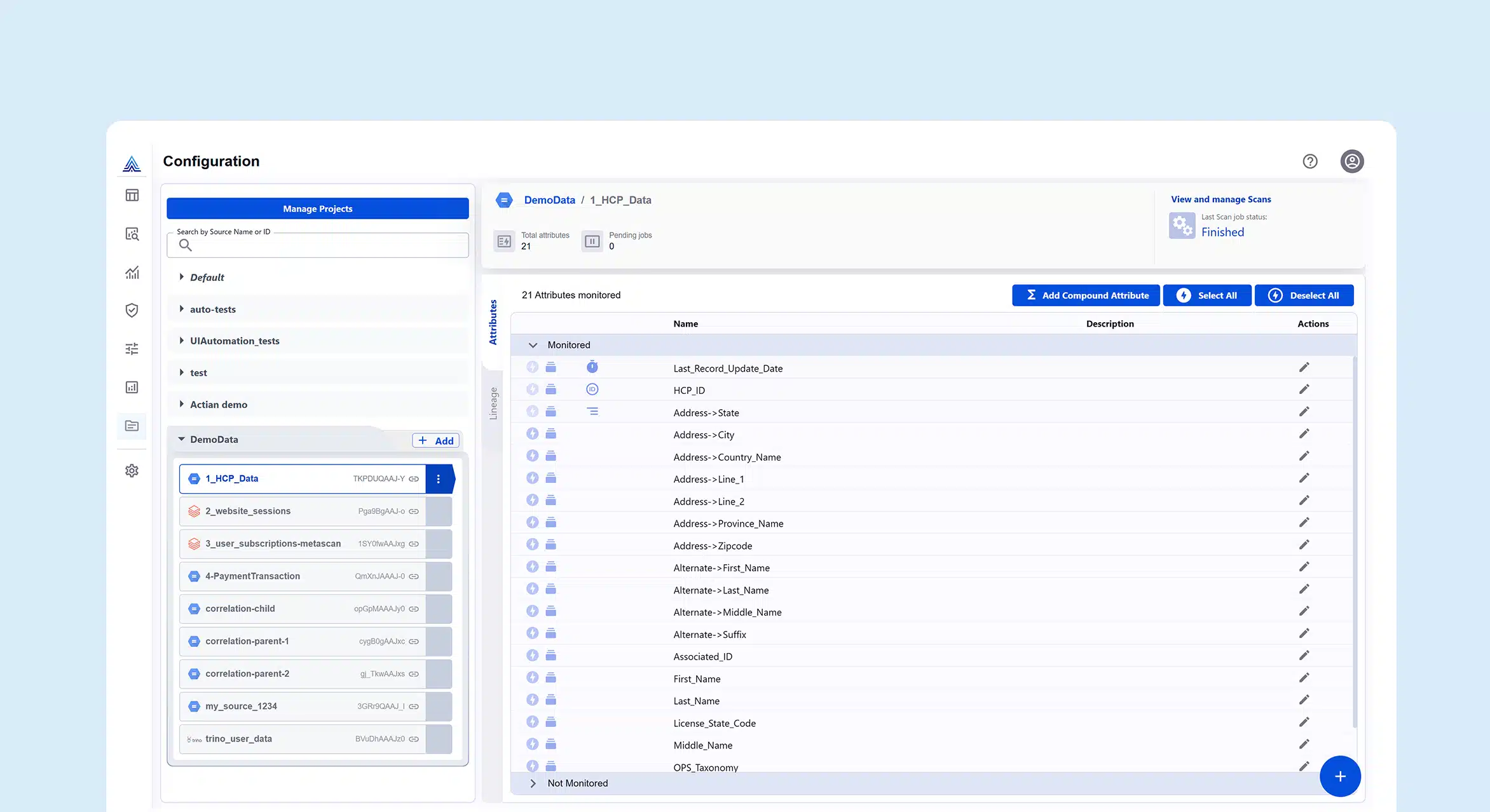Organizations must ensure that their data is accurate, consistent, secure, and compliant with relevant laws and regulations. This is where data governance comes into play. Data governance refers to the overall management of data availability, usability, integrity, and security within an organization. One of the most critical components of an effective data governance strategy is the creation and implementation of data governance policies.
Data governance policies define the rules, processes, and standards for managing data throughout its lifecycle. These policies ensure that data is governed in a way that maximizes its value while minimizing risks associated with misuse, data breaches, and non-compliance. In this article, we will examine the process of creating and implementing data governance policies, as well as their importance for modern organizations.
What are Data Governance Policies?
Data governance policies are a set of formalized rules and guidelines that dictate how data should be managed, protected, utilized, and destroyed within an organization. These policies cover various aspects of data management, including data quality, data security, data privacy, and regulatory compliance. They provide a framework for ensuring that data is handled consistently across all departments and systems, aligning with both business goals and regulatory requirements.
Key components of data governance policies typically include:
- Data ownership and stewardship responsibilities.
- Data security and privacy standards.
- Data quality management processes.
- Data classification and access control guidelines.
- Data retention and archival policies.
- Compliance with relevant regulations (such as GDPR, CCPA, etc.).
Steps for Creating Data Governance Policies
The process of creating data governance policies requires a structured approach to ensure that the policies address all necessary aspects of data management and are aligned with organizational objectives. Here are the steps for creating effective data governance policies:
1. Define the Objectives and Scope
Before creating data governance policies, it is important to clearly define the goals of the data governance program. These goals should align with the organization’s broader business strategy and address key challenges such as data quality, data security, compliance, and operational efficiency.
The scope of the policies should also be determined. This includes identifying which data domains (e.g., customer data, financial data, employee data) and systems will be governed, and whether the policies will apply to all data or only specific subsets. The scope should also include geographical considerations if the organization operates in multiple regions with different legal and regulatory requirements.
2. Identify Key Stakeholders
Data governance policies cannot be created in isolation. Engaging key stakeholders from various departments, such as IT, legal, compliance, data management, and business units, is crucial to ensure that the policies meet organizational needs and legal requirements.
Data owners, data stewards, and subject matter experts (SMEs) play an important role in providing insights into the specific data management challenges faced by their respective departments. Their input helps ensure that the policies address real-world issues and create a sense of ownership and accountability among those responsible for managing data.
3. Assess Current Data Management Practices
Before drafting data governance policies, organizations must assess their existing data management practices. This includes evaluating the current state of data quality, security protocols, data integration, and compliance with existing regulations.
Conducting a data audit can provide valuable insights into data gaps, inconsistencies, and potential risks. It also helps identify areas where improvements can be made. Understanding the current state of data management allows for the development of more targeted and effective policies that address existing weaknesses.
4. Develop Data Governance Framework
A robust data governance framework outlines the policies, procedures, and roles required to effectively manage and oversee data within the organization. The framework should include:
- Data Ownership: Clearly define who owns and is responsible for different types of data, such as business units, data stewards, or IT.
- Data Stewardship: Assign data stewards to oversee the quality and management of data across departments. These individuals will ensure data standards are maintained and that data-related issues are addressed promptly.
- Data Access and Security: Define rules around who can access which data, how access is granted, and the security protocols that need to be followed, such as encryption or authentication.
- Data Quality Standards: Establish processes for monitoring and improving data quality, including accuracy, consistency, and completeness. This may involve data validation rules, data cleansing techniques, and regular audits.
- Data Lifecycle Management: Define the stages of the data lifecycle—from data creation to data deletion—and establish rules for data retention, archiving, and disposal in compliance with legal and regulatory requirements.
5. Create Clear and Actionable Policies
Once the framework is established, the next step is to create the actual data governance policies. These policies should be clear, concise, and actionable, with specific rules and guidelines that can be easily understood and implemented by all stakeholders.
For example:
- A data access policy might specify which roles within the organization are authorized to access specific types of data and the security protocols required to access it.
- A data quality policy might set expectations for data accuracy, completeness, and consistency, with guidelines on how to address data errors and inconsistencies.
- A data retention policy may define how long different types of data should be kept and when they should be archived or deleted.
6. Establish a Monitoring and Enforcement Mechanism
To ensure that the data governance policies are followed, it’s essential to have mechanisms in place to monitor adherence and enforce compliance. This may include automated tools to track data access, data quality metrics, and data usage patterns.
Regular audits and reporting help identify gaps in compliance and areas where policies may need to be updated. Data governance committees or teams can be responsible for overseeing the enforcement of these policies and addressing any issues that arise.
7. Communicate and Train Employees
Once data governance policies are created, it is essential to communicate them to all relevant stakeholders within the organization. This includes not only data owners and stewards but also end-users who interact with the data on a daily basis.
Training programs should be conducted to educate employees about the importance of data governance and how to adhere to the policies. This helps ensure that everyone is aware of their roles and responsibilities regarding data management.
8. Review and Update Regularly
Data governance is not a one-time effort. As business needs, regulations, and technology evolve, it is important to regularly review and update data governance policies. This ensures that they remain relevant, effective, and aligned with the organization’s strategic objectives.
An ongoing feedback loop that includes input from data users, stewards, and compliance officers can help identify areas for improvement. Regular updates also allow organizations to adapt to new regulatory requirements and emerging data management technologies.
Best Practices for Implementing Data Governance Policies
Some of the best practices for implementing data governance policies include:
- Start Small and Scale Gradually: Begin by focusing on a few key data domains or business units and gradually expand the scope of your data governance program as the policies prove effective.
- Leverage Technology: Use data governance tools and technologies to automate policy enforcement, monitor data quality, and track compliance.
- Foster a Data-Driven Culture: Encourage a culture where employees understand the importance of data governance and take ownership of data quality and security.
- Align With Business Goals: Ensure that data governance policies support the organization’s overall business strategy and help drive value through better decision-making and operational efficiency.
Automate the Enforcement of Data Governance Policies with the Actian Data Intelligence Platform
Creating and implementing data governance policies is a critical step in ensuring that an organization’s data is managed effectively, securely, and in compliance with regulations. Well-defined policies promote data quality, streamline operations, mitigate risks, and enable better decision-making. By following a structured approach to policy creation and enforcement, organizations can build a strong foundation for data governance, enhancing their ability to leverage data as a strategic asset in a rapidly evolving business landscape.
Actian’s Data Intelligence Platform contributes to an active and agile data governance that delivers trusted, compliant, and secure information across an organization. It helps automate data governance policies and ensures that data teams have access to the data they need to function effectively. Request a personalized demo of the Actian Data Intelligence Platform to see how the platform works.
FAQ
Data governance policies are formal rules and guidelines that define how an organization manages, protects, accesses, and uses its data. They establish standards for data quality, privacy, security, lifecycle management, and accountability.
They ensure data is accurate, consistent, compliant, and secure. Strong governance policies reduce risk, prevent misuse, support regulatory requirements, and enable trustworthy analytics and AI across the enterprise.
Key components typically include data ownership and stewardship roles, data quality expectations, classification standards, access controls, retention schedules, privacy requirements, change-management procedures, and audit rules.
Responsibility is shared across data stewards, data owners, IT teams, security teams, compliance officers, and the Chief Data Officer (CDO). Governance committees often oversee policy adoption and enforcement.
They ensure that data used for analytics and machine learning is high-quality, well-documented, compliant with regulations, and accessible to authorized users. This improves model performance and reduces operational and compliance risk.
Common challenges include siloed data, inconsistent definitions, lack of executive sponsorship, poor documentation, manual processes, low user adoption, and difficulty balancing governance requirements with agility.





